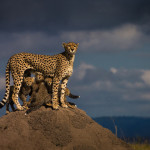
Outside of the National Geographic photo competitions, the Sony World Photography Awards is the best at bringing to the forefront the world’s most talented photographers. Did you know that it’s the world’s largest photography competition? It receives an astounding number of entries, this year it was a record-breaking 230,103 from 186 countries, that’s up 33% from last year. Since its launch in 2007, they’ve surpassed 1 million entries, which makes them one of the most influential photography competitions in the world.
The shortlisted images have just been announced, and boy, are the photos spectacular. I sorted through all of their main categories – Professional, Open and Youth, and brought together 30 of my favorites. Though there was a “Highlights” package I could have just presented, instead I wanted to look at each shortlisted photo to find the most spellbinding, the ones that give us a new way to look at life. From a mother cheetah protecting her cubs to a father cleansing his son’s skin, enjoy these beautiful moments of the world around us.
The overall winner of the awards will be announced on April 21, 2016. Can’t wait!
Above: Image Name: Protection
Her name is Malaika. She is well known in Masai Mara reservation (Kenya). Her behavior towards her cubs is a great example of perfect motherhood. She spends the whole day trying to keep her cubs safe. After a lioness killed one of her cubs, she is left with five cubs.
Series of wildlife images taken in Masai Mara reserve in Africa
Copyright: © Mohammed Yousef, Kuwait, Shortlist, Professional Environment, 2016 Sony World Photography Awards
Professional Competition

Series Name: Picasso’s Women
Series Description: The project consists of seven photographic shots, each representing one of the women who influenced the sentimental life and artistic work of Pablo Picasso: Eva Gouel, Gaby Depeyre, Olga KhaKhlova, Marie-Therese Walter, Dora Maar, Francoise Gilot and Jacqueline Rocque. The project was conceived from the need to tell the story and give a face to the women who always lived under Picasso’s wings and influenced the work of the most known artist of the twentieth century.
Image Description: Dora Maar (Henriette Theodora Markovic) was an independent and anti-conformist woman and photographer. She met Picasso in 1936. The painter kept her away from photography and pushed her into painting (a field in which he was the unquestioned king). Living in the shadow of the greatest artist of the time, Maar suffered from self-doubt and depression throughout her nine-year liaison with Picasso. The painter defined her as the most intelligent of all of his women and the one that made him laugh the most. else. Despite this, he always pictured her as the crying woman. Maar found herself abandoned by Picasso, and for this reason suffered of a nervous breakdown; she subsequently undertook electroshock therapy for three weeks in a psychiatric hospital. She said “after Picasso there is only God”.
Copyright: © Cristina Vatielli, Italy, Shortlist, Professional, Staged, 2016 Sony World Photography Awards

Series Name: Pools
The Pools series is a study of water, one of the most precious resources for life on our planet. The artistic approach of photographer Stephan Zirwes is to show how the important resource is in contrast between being the consummate location for entertainment and the incredible waste of drinking water “not only for being used in private pools but also the trend to privatise what is a public asset and use it for commercial reasons. Public pools can still be a symbol for the importance that water should be free accessible to everyone. The clean formal language and the simple design of the pictures focus our interest on this newsworthy issue with elegance and almost playful. A deep dive into the blue as Zirwes copied parts of the original pool tiles and enlarged them in a simple, visible way to create a kind of mount in patterns.
Copyright: © Stephan Zirwes, Germany, Shortlist, Professional , Architecture, 2016 Sony World Photography Awards

Series Name: Feral Children, 2015
A feral child is one which has lived isolated from human contact, often from a very young age. As a result the child grows up with little or no experience of human care, behaviour or language. Some were cruelly confined or abandoned by their own parents, rejected perhaps because of their intellectual or physical impairment, or the parent’s belief that this was the case. In other instances the loss of both parents was the cause. Others ran away after experiencing abuse. Yet more ended up in the wild and were “adopted” by animals as a result of a wide variety of circumstances getting lost, being taken by wild animals, etc. Documented cases of feral children are geographically spread over four continents, and vary in age from babies taken by wild animals up to eight year olds. Of course, these cases are only known of because the child survived. It is not difficult to think that there are probably untold cases where the outcome was less favourable.As a mother of two young boys I was appalled and intrigued in turn when I first learned about feral children. My initial reaction was to think how parents could either neglect or lose their child. My maternal instinct goes into overdrive when I consider these young people experiencing their lives alone or in the company of wild animals. Then I consider and admire the fortitude they must have shown to survive such isolation and extreme circumstances. In any of the circumstances that I have read about, it completely overwhelms the boundaries of my comprehension. However, I have risen to the challenge of trying to capture my thoughts photographically about the isolation under which these youngsters found themselves, wondering at the same time if those living in the companionship of wild animals were perhaps better off than those whose young lives were spent with no companionship at all. I chose 15 cases to portray, these range from a girl who as a toddler was confined by her parents to a potty chair for ten years to that of a baby boy who was stolen by a leopardess and found three years later in the company of her and her latest cubs. My idea was not to replicate the exact scenes, but to interpret and duplicate the feelings and actions of each feral child living their experience. Some spent most of their time indoors, even in close proximity to or inside human habitation. Yet others spent the duration of their feral life outside, exposed to the elements, depending on their own ability and that of their wild companions for shelter and food and water, not to mention constantly having to avoid danger and health problems. Life is complex, for some more than others, even when we are considering a normal human life. Its complexity varies from one part of the globe to the other. In considering feral children, who are fully human, at least at the start of their lives, how can we not look at my images and question and wonder about the tenacious survival instincts of these 15 human beings.
Copyright: © Julia Fullerton-Batten, United Kingdom, Shortlist, Professional, Staged, 2016 Sony World Photography Awards

Series Name: Dead End – Oil Exploration in the Arctic
Series Description: Climate change is taking its toll on the Planet and its inhabitants. Nowhere else, is this more visible than in the Arctic. On our warming globe, the Arctic experiences temperature rise twice as high than elsewhere. Over the last few decades, Arctic sea ice has experienced a dramatic decline. Its a bitter irony that a rapidly changing Arctic is not seen as a stark warning to our way of life, but instead exploited by governments and oil companies to further drill for the very same oil that caused the melting in the first place. Despite rapid and profound changes, the Arctic is very much still an incredible inhospitable place to drill for oil.
Image Description: Calved ice from a glacier at Scoresby Sund fjord, east coast of Greenland.
Copyright: © Christian Aslund, Sweden, Shortlist, Professional, Campaign, 2016 Sony World Photography Awards

Series Name: The Death of Migratory Birds
In the migratory season, there’s still some people to catch the migratory birds by erecting the net in order to get a large profits although the government have prohibited to do that. Thousands of migratory birds are killed each year, and the ecological balance is destroyed deeply. Day by day, the ultimate victims will be the man himself. I wish these photos can play a role for the protection of migratory birds.
Copyright: © Yong An He, China, Shortlist, Professional, Contemporary Issues, 2016 Sony World Photography Awards

Series Name: Running Away with the Circus
Series Description: There are more than 300 people that with the Ringling Bros. and Barnum & Bailey circus blue unit, representing 25 different countries and speaking everything from Russian to Arabic to Guarani. A few travel in cars and trailers, but a majority, 270, live on the trains. Most come from multigeneration circus families, to the extent that collectively, the circus staff represents thousands of years of circus history. The men and women all say that only circus people like them can understand the lifestyle. They spend 44 weeks of the year traveling an average of 20,000 miles from coast to coast on a train that is 61 cars ”a full mile” long. It is a life of close quarters and rigorous training, a life that many of the performers began in childhood. Their job is to convince the world that the circus still matters.
Copyright: © Stephanie Sinclair, US, Shortlist, Professional Daily Life, 2016 Sony World Photography Awards / National Geographic Creative

Series Name: The Philosopher
On the Philosopher As an expression of absurdity in an absurd world, eruption of freedom in skimpy landscapes, anarchic dancing in a shabby architecture, the pictures of “The Philosopher” are the result of improvised events, born out of the search “at the whim of improvised journeys“ of places favorable to disruption, to reinvention. The settings are those of the institutional planning. Confined in their useful role, they become inhuman when pushed by. The pictures are Epectase brings back the body to it, fitted with a bizarre sensuality, both Old France style and futuristic. Between dada poetry and punk controversy, the body that is staged here wants to wake up life. Absurdity in an absurd world, eruption of freedom in skimpy landscapes, anarchic dancing in a shabby architecture, the clichè of the philosopher are the result of improvised events, born of research at the discretion of improvised trips the two artists.
Copyright: © Juliette Blanchard, France, Shortlist, Professional, Staged, 2016 Sony World Photography Awards

Series Name: Land of Nothingness
A country named after a desert. One of the least densely populated places on earth. Defined by its rich variety of colors yet in a forever changing, yet completely barren landscape. Namibia’s landscape draws you in, through a vast brown plain of scorched earth, and steers you over the white surface of a salt pan to finally arrive in the gold tones of the sand dunes. Patience is required to discover the wide range of Namibia’s subtle scenery. It literally takes you hours, driving though nothing, to at long last arrive at…more of nothing. The sight of other people is rare and only the strategically located gas stations are a reminder of the world beyond. This country is in another time zone—time seems to move slower but it feels more logical, somehow. Captivated by these washed out yet delicately colored landscapes, you can drive for hours. Chaperoned by herds of giraffes or zebras, shadowed by flocks of flamingos, suddenly stumbling upon a family of elephants. The animals look up curiously, but soon forget about you and slowly continue their journey, unhurried by your presence, at their own pace.
Copyright: © Maroesjka Lavigne, Belgium, Shortlist, Professional Landscape, 2016 Sony World Photography Awards

Series Name: Real World Aliens
This series represent exploration of the most extreme and far cold-water seas, washing the coasts of Russia, because only few people in the world had chance to dive there. These seas are true pearls of nature, hiding mysteries and treasures not only for divers and scientists – there is another universe with it’s own aliens and fantastic creatures. These strange animals are mostly undescribed. Some of them are tiny, some are hidden because of their complete transparency, some are beautiful and gentle giants – in the underwater world you can find living things for the first time in the history of humanity, but they were there for millions of years. Modern diving and photo equipment give us a chance to reveal this beauty hidden in the dark.
Copyright: © Alexander Semenov, Russia, Shortlist, Professional Environment, 2016 Sony World Photography Awards

Series Name: Eagle Hunters of Western China
On January 30, 2015 in Xinjiang, China.
The Eagle Hunting festival, organized by the local hunting community, is part of an effort to promote and grow traditional hunting practices for new generations in the mountainous region of western China that borders Kazakhstan, Russia and Mongolia. The training and handling of the large birds of prey follows a strict set of ancient rules that Kazakh eagle hunters are preserving for future generations.
Copyright: © Kevin Frayer, Canada, Shortlist, Professional Environment, 2016 Sony World Photography Awards

Series Name: RIC Hornets
These images were created for the Rehabilitation Institute of Chicago’s Adaptive Sports Program and the RIC Hornets wheelchair basketball team.
Copyright: © Rob Gregory, United States, Shortlist, Professional , Campaign, 2016 Sony World Photography Awards

Series Name: Art in the Wild
Series Description: Series of Wildlife Images Taken in Masai Mara Reserve in Africa
Image Name: Respect the Tusk
Image Description: The love story between the lion and the lioness in Masai Mara is fascinating. Anger in this case is translated as romance and care.
Copyright: © Mohammed Yousef, Kuwait, Shortlist, Professional Environment, 2016 Sony World Photography Awards
Open Competition

Image Description: Polar Bear Enjoying His Bath
Copyright: © Michaela ämÌdov·, Czech Republic, Shortlist, Open Nature and Wildlife, 2016 Sony World Photography Awards

Image Name: Open Air
Image Description: People on mass yoga exercise in the central park of Vilnius.
Copyright: © Karolis Janulis, Lithuania, Shortlist, Open People, 2016 Sony World Photography Awards

Image Name: The Waves of Sawarna
Copyright: © Dikky Oesin, Indonesia, Shortlist, Open Panoramic, 2016 Sony World Photography Awards

Image Name: Sea Baby
Image Description: Bering sea. Commander islands
Baby fur seal
Copyright: Andrey Narchuk, Russia, Shortlist, Open, Nature and Wildlife, 2016 Sony World Photography Awards

Image Name: Blue Moon
Image Description: Four centimeters of mightyness that moves slowly and unrelentless on a tree, while the moon rises on the background. The rhinoceros beetle is a nocturnal insect, during the day they stay safe under the cortex of the trees and with the summer they become very active flying at dusk to find a mate.
Copyright: © Simona Tedesco, Italy, Shortlist, Open, Nature and Wildlife, 2016 Sony World Photography Awards

Image Name: Cuba Beach/Reuters
Image Description: People swim at the sea in Havana, April 28, 2015. On Sunday, Cuba registered a temperature of 39.7 degrees Celsius, 0.1 degrees less than the island’s historic record, according to Jose Rubiera, Director of the National Forecast Center of the Institute of Meteorology of Cuba.Copyright: � Alexandre Meneghini, Brazil, Shortlist, Open, 2016 Sony World Photography Awards

Image Name: Icelandic Horses
Copyright: © Nick Kontostavlakis, Greece, Shortlist, Open Nature and Wildlife, 2016 Sony World Photography Awards

Image Name: Dancing with Stars
Image Description: The mass swarming of Danube mayfly (Ephoron virgo) in R√°ba and Danube rivers is one of the most exciting phenomenon for me.
Copyright: © Imre PotyÛ, Hungary, Shortlist, Open Nature and Wildlife, 2016 Sony World Photography Awards

Image Name: Gangasagar Fair
Image Description: Every year in the month of January few lacks of devotee come to Gangasagar fair in West Bengal. It is the 2nd largest fair of India. Captured the devotees while they worship sun just after their bath.
Copyright: © Abhijit Banerjee, India, Shortlist, Open Competition, Travel, 2016 Sony World Photography Awards

Image Name: The Stairway to Hell
Image Description: Heaven meets hell as the milky way ascends over the Darvaza gas crater in the Karakom desert, Turkministan. Taken at the Darvaza gas crater in the Karakom desert, Turkmenistan.
Copyright: © Tino Solomon, UK, Shortlist, Open Low Light, 2016 Sony World Photography Awards

Image Name: Creation of Love
Image Description: A boy creatively made a LOVE shape at the River of Tukad Yeh Unda in Klungkung Sub-District, Klungkung Regency, Bali, Indonesia.
Copyright: © Cheung Yin Fang, Malaysia, Shortlist, Open Competition, Split Second, 2016 Sony World Photography Awards

Image Name: Reindeer Farmer Kids
Image Description: Reindeer farmer kids in Mongolia.
Copyright: © Peter Voss, Germany, Shortlist, Open Competition, Smile, 2016 Sony World Photography Awards

Image Name: Lighting Dream
Image Description: Annually on holidays Vu Lan – signaling parents. people want them to pray for his parents. They were released on river use candles temple.
Copyright: © Minh Ngo Thanh, Vietnam, Shortlist, Open Arts and Culture, 2016 Sony World Photography Awards

Image Description: This is the Impression Lijiang, it is a cultural theatrical show that describes the lifestyle and several interesting traditions of the Naxi, Yi and Bai people in a colourful and flamboyant outdoor production.The show is innovatively staged in the morning and afternoon. Lijiang city, China
Copyright: © Nader Saadallah, Egypt,, Shortlist, Open Arts and Culture, 2016 Sony World Photography Awards

Image Name: Dream – The Little Dancer
Copyright: © Mickael Szymanski, France, Shortlist, Open Enhanced, 2016 Sony World Photography Awards

Image Name: Farming the Sea
Image Description: A fisherman is farming the sea in between the bamboo rods constructed for aquaculture off the coast in southern China.
Copyright: © Tugo Cheng, Hong Kong, Shortlisted, Open Competition, Travel, 2016 Sony World Photography Awards
Youth Competition

Image Name: Salt Cleansing
Image Description: The Oroomiyeh lake has always been a place where people cleanse. Cleanse their skin from the penetrating rays of the sun and cleanse their minds and render it like the landscape itself; white, blank, with an indistinguishable horizon.
Copyright: © Sepehr Jamshidi Fard, Iran, Shortlist, Youth Culture, 2016 Sony World Photography Awards

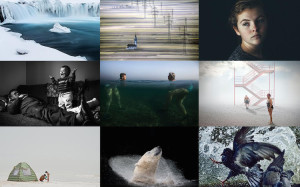
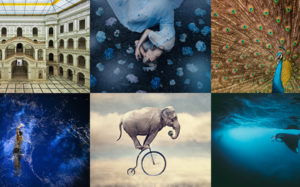



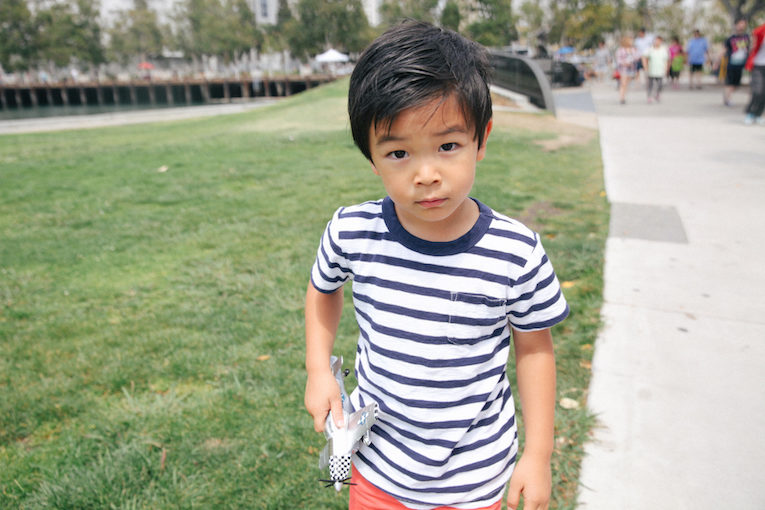
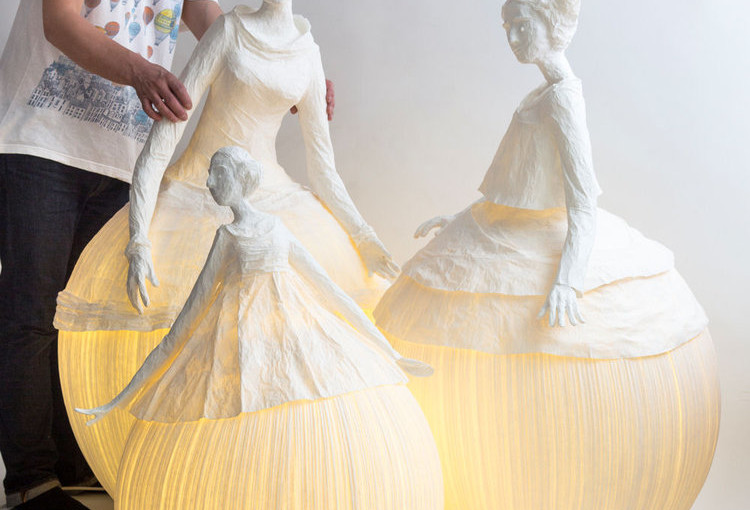
0 comments